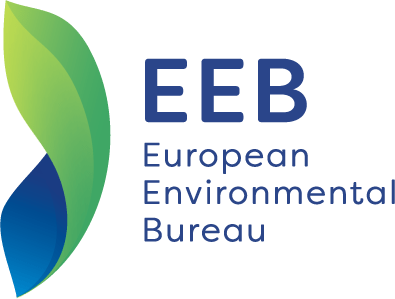Civil society calls for ban on dental amalgam
Europe will imminently decide the fate of dentistry’s most controversial procedure: the use of mercury-based dental fillings, known as amalgam. It is condemned as a risk for “secondary poisoning” by a European Commission scientific advisory body because it gets into fish that people eat [1]. Furthermore, the Commission’s health advisory committee has recommended a ban on its use in fillings in children and pregnant women [2].
Representatives from the three European institutions, namely the Commission, the Parliament and the Council, will meet on 6 December to discuss the text of the EU regulation on mercury, including its use in dentistry. Europe is the largest amalgam user in the world, and consumer, health and environmental NGOs, as well as many dentists, are calling for a ban.
Elena Lymberidi-Settimo of the European Environment Bureau said:
“An ambitious regulation is needed to reduce the use of mercury in the EU and phase it out of dentistry. Members of the European Parliament have voted in favour of ending amalgam by 2022 (with special allowances for medical reasons) with a ban sooner for pregnant or breastfeeding women and children. We agree – over 66% of dental fillings in the EU are now made without mercury and it is now time that this becomes the norm.”
The European Commission has also turned its back on the opinion of the European public.
Marie Grosman, World Alliance for Mercury-Free Dentistry, said:
“In the public consultation organized by the European Commission, 88% of participating Europeans recommended to phase out amalgam and 12% called for its use to be phased down. Since the Commission sought the vote of the people, why don’t they follow their advice?”
Dentists once heavily used amalgam, but are abandoning it in droves with several Member States either disallowing its use (i.e. Sweden) or reducing it to less than 5% of all dental fillings (for example, Finland, Denmark and the Netherlands).
Dr Hans-Werner Bertelsen, a dentist from Bremen, Germany, said:
“European dentists know the end is near for amalgam. Alternatives are available, affordable, and effective. It is time for Europe to say good-bye to amalgam, a material clearly inferior to composite or ionomers.”
The environmental impact of dental amalgam is significant, impacting on air, water and land, and being taken up in the fish eaten by Europeans.
Philippe Vandendaele of Health Care Without Harm said:
“Mercury is globally one of the 10 chemicals of major public health concern, yet the Commission proposes we maintain the status quo. Empirical evidence shows that due to technological changes and dentist training, the cost of mercury-free dentistry is declining, so the price differential continues to shrink.”
Indeed, the claim that amalgam is slightly cheaper than alternatives is illusory.
Johanna Hausmann of Women in Europe for a Common Future, added:
“When amalgam’s disastrous impact on the environment is factored in, amalgam’s costs are as much as €82 more per filling than composite. Continuing the use of amalgam does not even make economic sense.” [4]
A growing consensus is that Europe must, at the very least, ban amalgam use for children and pregnant women.
Genon Jensen, Health & Environmental Alliance (HEAL) said:
“We must first protect those most vulnerable to mercury’s neurotoxicity – the developing brains of children, babies, and foetuses. Several nations, such as Germany, the UK and Poland, have already announced that they don’t use or that dentists should not use amalgam for children or pregnant women.”
Members of the European Parliament Michèle Rivasi (France), Stefan Eck (Germany) and Piernicola Piedicini (Italy) are circulating petitions in four languages to ban amalgam in Europe. Signatories have already exceeded 17,000 names.
Notes to the editor
[3] European Parliament’s Environment Committee voted on the mercury regulation on 13 October 2016, A8-0313/2016
[5] A Joint NGO letter was sent on15 November,to EU Environment ministers, to EU Health Ministers, and to the European Commission.
[6]The Minamata Convention requires each party to “phase down the use of dental amalgam.” Clearly out of step with the spirit and intent of the Convention, the Commission’s proposal would merely require the use of amalgam separators and encapsulated amalgam and not lead to a reduction in amalgam use.
It’s estimated that Europeans are storing upwards of 1,000 tonnes of mercury in their mouth which will eventually be released to the environment. (EEB-2007 Mercury in dental use :Implications for the European Union, Concord East/West)
[7] Petitions on dental amalgam
https://www.change.org/p/beatrice-lorenzin-stop-al-mercurio-nei-nostri-denti
https://www.change.org/p/jean-claude-juncker-f%C3%BCr-ein-amalgamverbot-in-der-zahnmedizin
https://www.change.org/p/jean-claude-juncker-pour-en-finir-avec-le-mercure-dentaire
https://www.change.org/p/jean-claude-juncker-let-s-ban-mercury-dental-fillings

